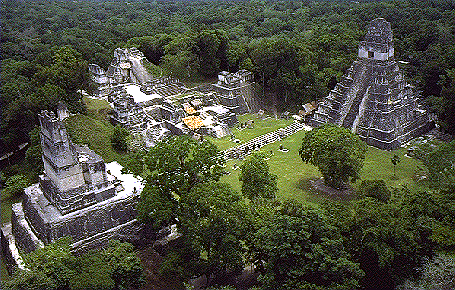

Read a short summary of each ancient civilization researched
Mesopotamia (3500 BC - 500 BC)
The origin of Mesopotamia dates back so far back that there is no known evidence of any other civilized society before them. Mesopotamia is generally credited with being the first place where civilized societies truly began to take shape.
CIVILIZATIONS
Ancient Egypt (3100 BC - 728 BC)
Ancient Egypt is one of the oldest and culturally richest civilizations in this list. The ancient Egyptians are known for their prodigious culture, the ever standing pyramids and the sphinx, the Pharaohs and the majestic civilization that resided by the banks of the river Nile.
Indus Valley Civilization (2600 BC - 1700 BC)
This civilization flourished in areas extending from what today is northeast Afghanistan to Pakistan and northwest India. Along with Ancient Egypt and Mesopotamia, it was one of three early civilizations of the Old World, and of the three the most widespread, covering an area of 1.25 million km.
Ancient China (2070 BC - 220 AD)
Ancient China (also known as Han China) has one of the most diverse histories. If you consider all the dynasties from the very first to the very last, you get a significantly huge period of time that needs to be covered concisely. Ancient China was broken up into the Xia Dynasty, the Shang Dynasty, the Zhou Dynasty, the Spring and Autumn Period, and the Warring States Period.



Ancient Greece (800 BC - 146 BC)
The ancient Greeks may not have been the oldest civilization, but they are one of the most influential civilizations to have ever existed. The rise of ancient Greece came from the Cycladic and Minoan civilizations (2700 BC – 1500 BC), and in the 8th century BC, Greece began to emerge from the Dark Ages which followed the fall of the Mycenaean civilization.
The Mayan Civilization (2600 BC - 900 AD)
The ancient Mayan civilization flourished in Central America. Once the civilization was established, it went on to prosper and become one of the most sophisticated civilizations, with a booming population of about 19 million at its peak. By 700 BC, the Mayans had already devised their own way of writing which they used to create their own solar calendars carved in stone.
Ancient Persia (550 BC - 330 BC)
There was a time when the ancient Persian civilization was the most powerful empire in the world. Though only in power for a little over 200 years, the Persians conquered lands that covered over 2 million square miles. From the southern portions of Egypt to parts of Greece and then east to parts of India, the Persian Empire was known for its military strength and wise rulers.
Ancient Rome (753 BC - 476 AD)
According to legend, Rome was founded in 753 BC by twin sons Romulus and Remus who were raised by a she-wolf. During its twelve-century history, the Roman civilization shifted from a monarchy to an oligarchic republic to a immense empire.
Since then it has been continuously inhabited, and, as headquarters first of the Roman Empire and then of the Roman Catholic Church, it has had an immense impact on the world.
The Aztec Civilization (1345 AD - 1521 AD)
The Aztecs, who probably originated as a nomadic tribe in northern Mexico, arrived in Mesoamerica around the beginning of the 13th century. From their magnificent capital city, Tenochtitlan, the Aztecs emerged as the dominant force in central Mexico, developing an intricate social, political, religious and commercial organization that brought many of the region’s city-states under their control by the 15th century.
The Inca Civilization (1438 AD - 1533 AD)
The Incas were the largest Empire in South America in the Pre-Columbian era. This civilization flourished in the areas of present day Ecuador, Peru and Chile and had its administrative, military and political center located at Cuzco, which lies in modern day Peru. The Incas were devout followers of the Sun God Inti. They had a king who was referred to as “Sapa Inca” meaning the child of the Sun.






